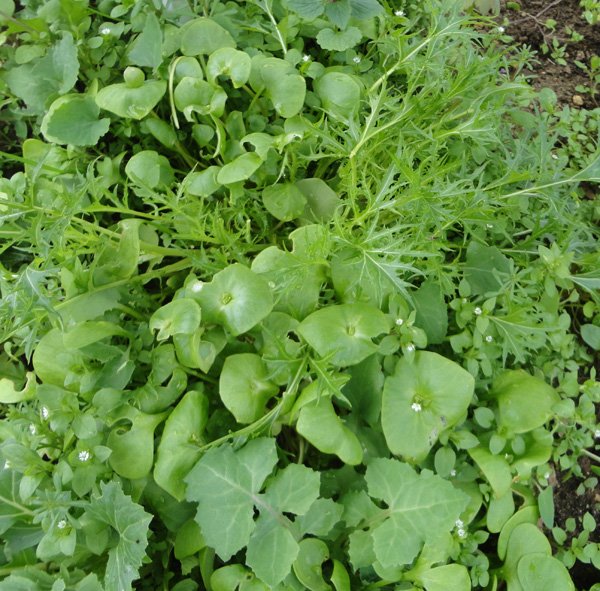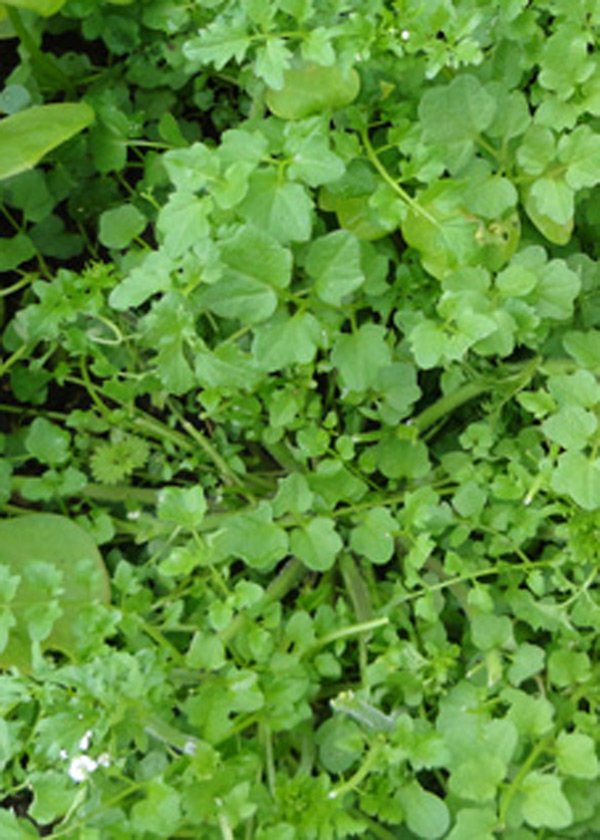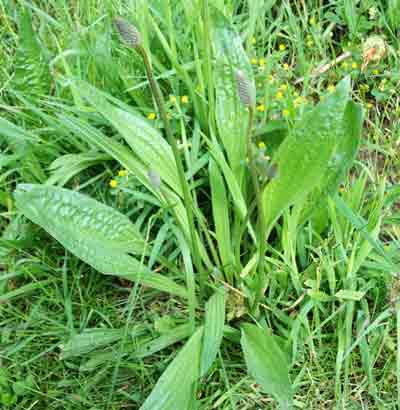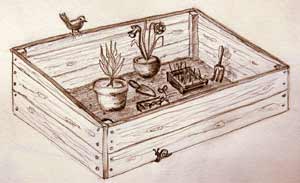More Edible Wild Plants

Here are some more good edible wild plants. Many of them are common garden species and others are common in hedges and fields and other wild spaces.
For the first page of edible plants please see: Edible Weeds Provide a Free Garden Bonus
Picture: Edible wild plants including Claytonia growing in my greenhouse. The fern-like plant is Mizuna, a Japanese salad plant.
Advertisements
Sorrel (Rumex acetosa) and Sheep's sorrel
If you do not have a patch of sorrel growing somewhere in your garden or close-by in the countryside, it is well worth planting some. You can find the seeds in gardening catalogues and some garden centres and it is quite easy to grow.
A smaller variety, Sheep's sorrel (Rumex acetosella) is common in grass and may well be growing somewhere in your garden. Look for it in cultivated soil and on grassy edges.
Both types of sorrel make a pleasant and refreshing addition to salads.
It is advisable to limit the amount you eat as the oxalic acid that partly accounts for the sharp taste can be slightly toxic if taken in excess. (It stops other nutrients being digested effectively and may lead to stomach upset.) It is also a good source of Beta carotene, vitamin C and other antioxidants.
Sheep's sorrel is one of the four ingredients for Essiac tea which is sometimes recommended for cancer sufferers. I have no knowledge as to how effective or useful it may be in this role.
Given damp and slightly shady conditions sorrel can grow surprisingly big. If you want to import some into your garden it might be best to keep it in a pot as it can spread rather too happily, if conditions are right. It will grow in long grass so could be easily accommodated in larger gardens.
The cultivated kind is larger than the wild species. Once established it can grow for several years. Cut off the seeding heads to reduce spread and to provide more usable young leaves.
Hairy Bittercress (Cardamine hirsuta)

I love this little weed so much I've started putting it in pots! It tastes just like cress. In the wild it likes shady conditions near water, where it can grow up to a foot high or more. It gets a bit woody if you let it get too dry.
It is best eaten early in the year when it forms a leafy mat if closely planted. The young leaves are tender and delicious.
This picture of hairy bittercress growing in my greenhouse was taken in the middle of April. The surrounding plants are Claytonia. See the previous page for details of that excellent salad plant.
Chickweed
This plant is good in that it tends to be prolific in fertile soil. It has a very "green" taste and so might qualify for adding to salads. I've not experimented much as I'm not as keen on it as on other easily available edible weeds. As it has a creeping habit it can tend to be a bit gritty. It will grow quite tall if conditions are favourable, i.e. damp and a bit shady.
Yarrow (Achillea millefolium)
Yarrow grows freely in the longer grass around our lawn. Its frondy young leaves can make a good addition to spring salads. This is a herb with many beneficial properties, including combatting inflammation. It is used in many herbal preparations and all the constituent parts have their uses.
In salads it is not especially tasty but can add a little texture and variety to a mixed green salad. The larger leaves are too tough to be of use, though I dare say they would contribute to greens for use in cooking.
Plantain (Plantago lanceolata)

Plantain or Ribwort
Two types are common in gardens here in the UK. Ribwort plantain, has strongly ribbed slender leaves.
The leaves are edible and taste slightly peppery. I'm not yet convinced that it is worth the trouble. Same goes for common plantain (Plantago major) which also has ribbed leaves. The main difference is that the leaves are quite fat - not slender.
It tends to grow in places where it gets walked on such as lawns, path edges and fields. The Saxons dubbed it "waybread" so it must have been valued as sustenance as well as for its herbal properties.
Ground elder (Aegopodium podograria)
This is one of those devilish weeds which can be very hard to eradicate. It is supposed to be quite delicious but I'm afraid I've not tried it yet. I'm reluctant to bring any part of this plant onto my property for fear that it will start reproducing before I get it into a pan!
Ground elder ( has a fresh aromatic smell, not unlike an aftershave brand I would be pushed to recall the name of. It is quite pleasant but strong, so the youngest, freshest leaves are most likely the best as they will be milder.
If you already have edible weeds such as ground elder on your patch, eating them just might help with weed control!
Advertisements
Edible weeds from the wild
Here are a few edible wild plants which you won't generally want growing in your garden. Some of them can provide excellent eating.
I'll just talk about them briefly here as they deserve a page to themselves.
Japanese knotweed has become a by-word for invasiveness. This large plant can now be found growing along waterways and in untended spaces across much of Britain. It can be used much like rubarb and is an excellent source of resveratrol, the potent anti-aging phenol also found in red grape skins.
Jack-by-the-hedge (Alliaria petiolata)is edible but I did not rate it when I tried it. It is also called hedge garlic or hedge mustard.
Cow parsley is edible but could be confused with hemlock so I do not advocate its use. If you are keen to try it be sure of your taxonomy!
Burdock is big and bossy and not so desirable in the garden. The roots are edible.
Lime leaves make a good addition to spring salads. I don't think it matters whether you pick the large leaf or small leaved variety. They have quite a fresh, mild taste.
Hawthorn leaves are a traditional snack food known as "bread and cheese" by generations of hungry children.
***
Here are some pages related to edible wild plants and other green foods which may interest you:
Some Alternatives to Lettuce for All Seasons
Identifying Weeds - An Easy Guide to Some Common Ones
*****
Sponsored links
Frugal Living - Living Well on Less
| Tweet |

| Tweet |

On other pages

Advertisements
Footprints
- an occasional e-zine from Greenfootsteps
If you would like to receive the e-zine, please just sign up below.






New! Comments
Have your say about what you just read! Leave me a comment in the box below.